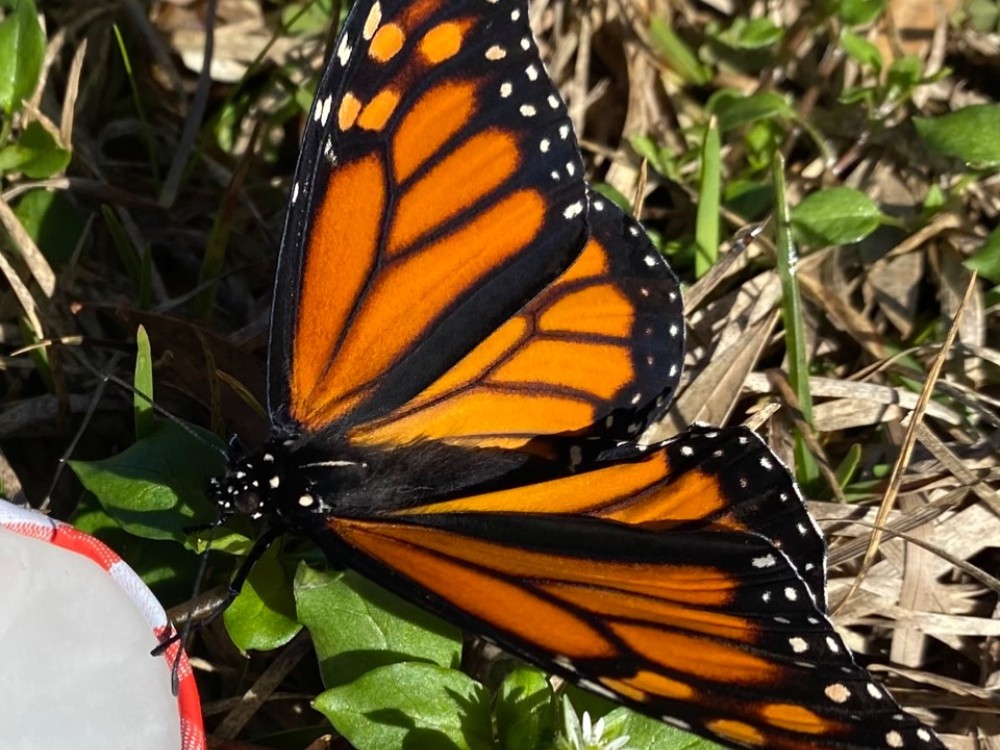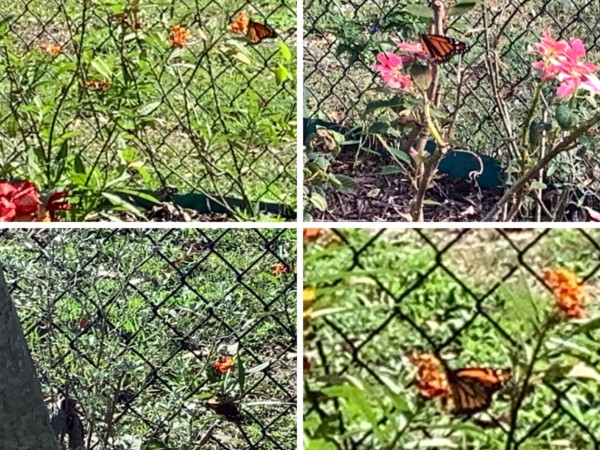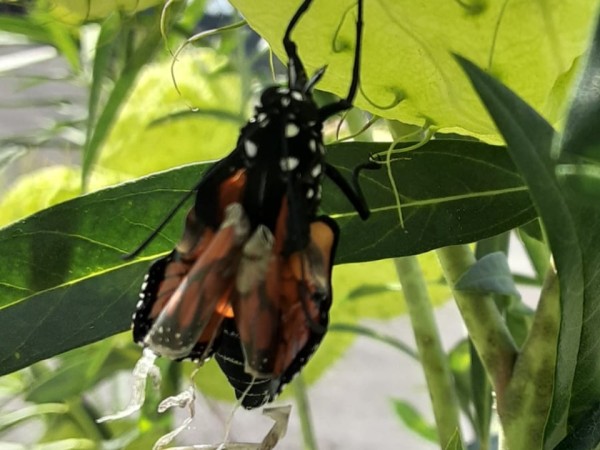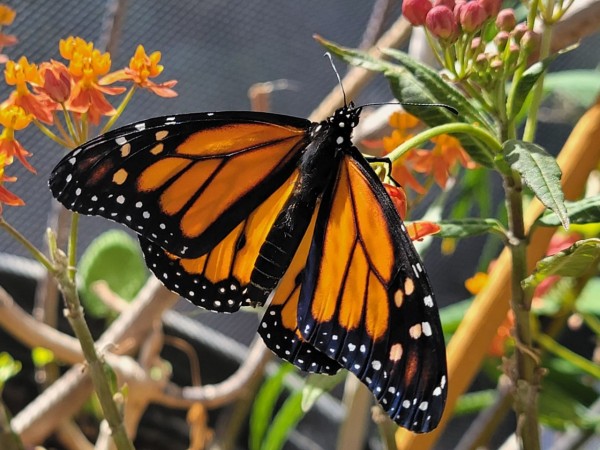Monarch Activity On Valentine's Day
Eastern Monarch Population
Monitor Overwintering Monarchs in Southeastern U.S.
If you live in the Gulf states of Texas, Louisiana, Mississippi, Alabama, and Florida as well as Georgia, South Carolina, and North Carolina, please continue to report monarch observations. We want to hear from you. Learn more about how to participate»
Jesús in McAllen, TX: "First sighting of 2023, gorgeous looking male enjoying the morning sun on my backyard." (02/05/2023)
Sylvia in Sebastian, FL: "These 2 have been dancing around for a week or so, today, one settled under a leaf, I figured, laying eggs, then the secon joined her and began lifting her up and flying away with her, she looked dead. I have video, but can’t attach both." (02/10/2023)
Letter From Estela Romero: No Rain in Sight
Estela Romero laments continue high temperatures with no rain. Monarchs are mating, however.
Monarchs of the Caribbean
Take a look at the Journey North maps to see where monarchs are being reported in the Caribbean.
Lydia in Barrio Palmarejo, Corozal, PR: "Lots of butterflies hatching." (01/13/2023)
Western Monarch Population
Letter From Gail Morris: Western Monarch Spring 2023 Report #1
Gail Morris is back to help us untangle what is happening with the Western monarch population. As Gail writes: "Spring is in the air and monarchs are mating and more active along the California coastal overwintering sites. Yet many are still nestled in the safety of the groves due to the cooler weather earlier, extending their stay. Rather than clustering, monarchs are now more spread out in the trees. Waiting longer in the groves is good for the monarchs, giving early emerging milkweeds more time to appear and grow waiting for gravid females."
Where are monarchs now in the southwestern regions of the U.S.? Please let us know if you are seeing monarch adults, eggs and/or larvae.
Barbra in La Quinta, CA: "Beautiful male Monarch resting on milkweed. His colors are so vivid!" (02/10/2023)









